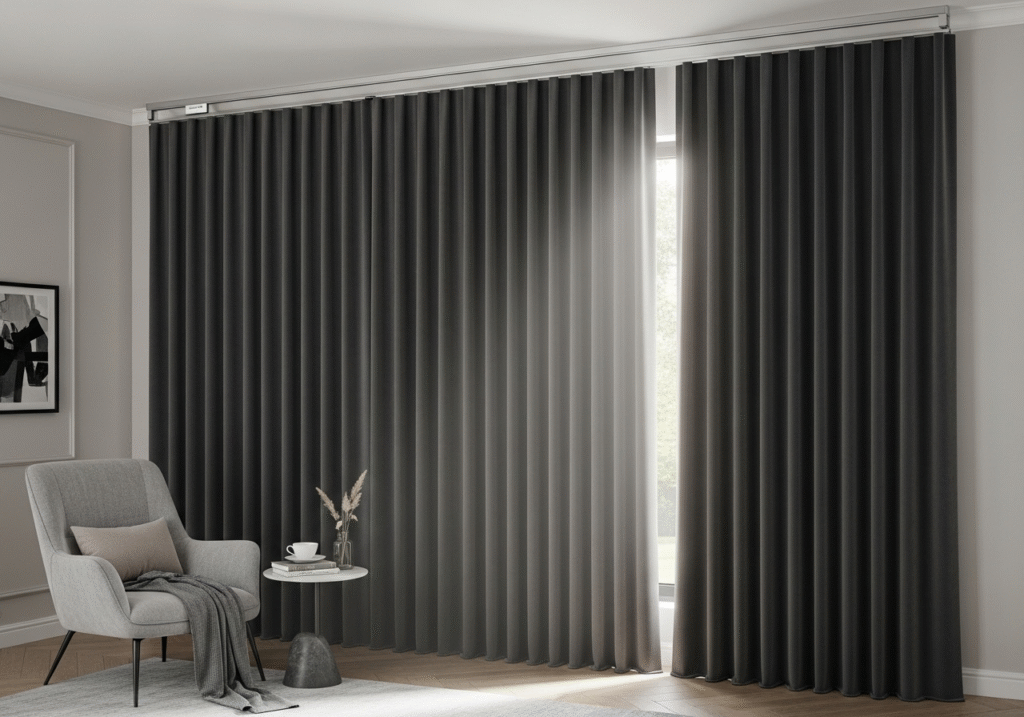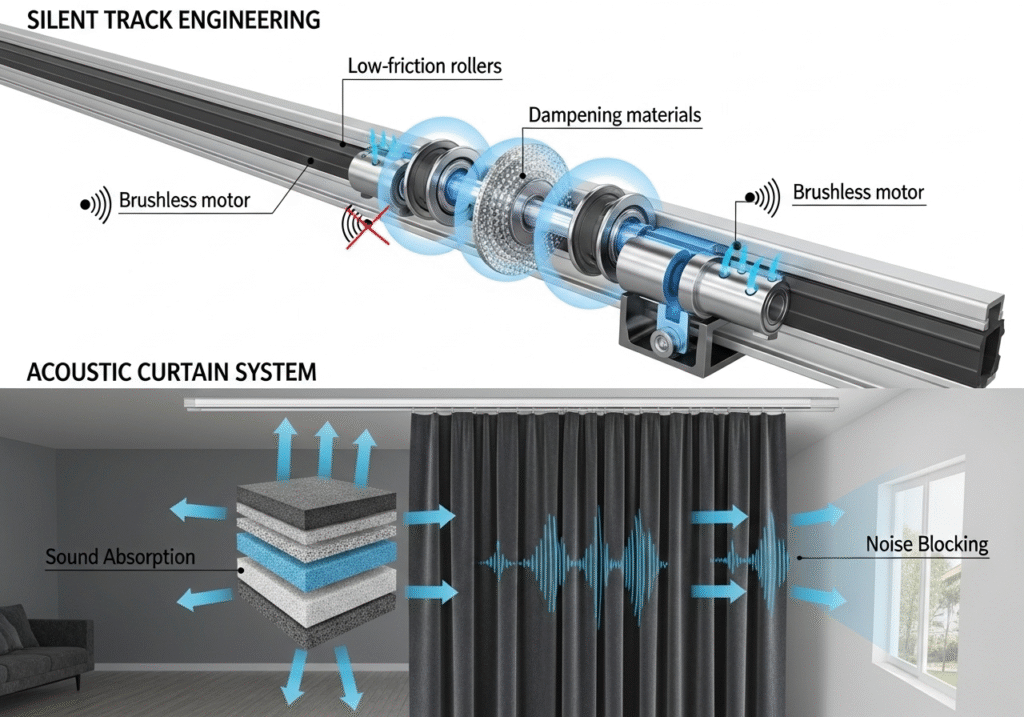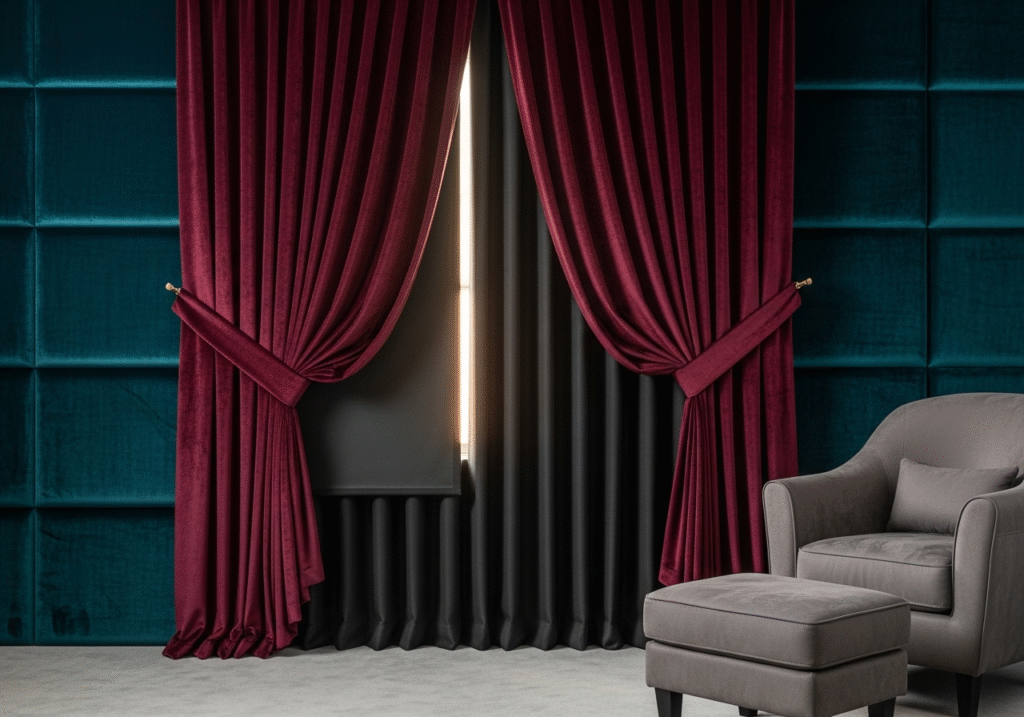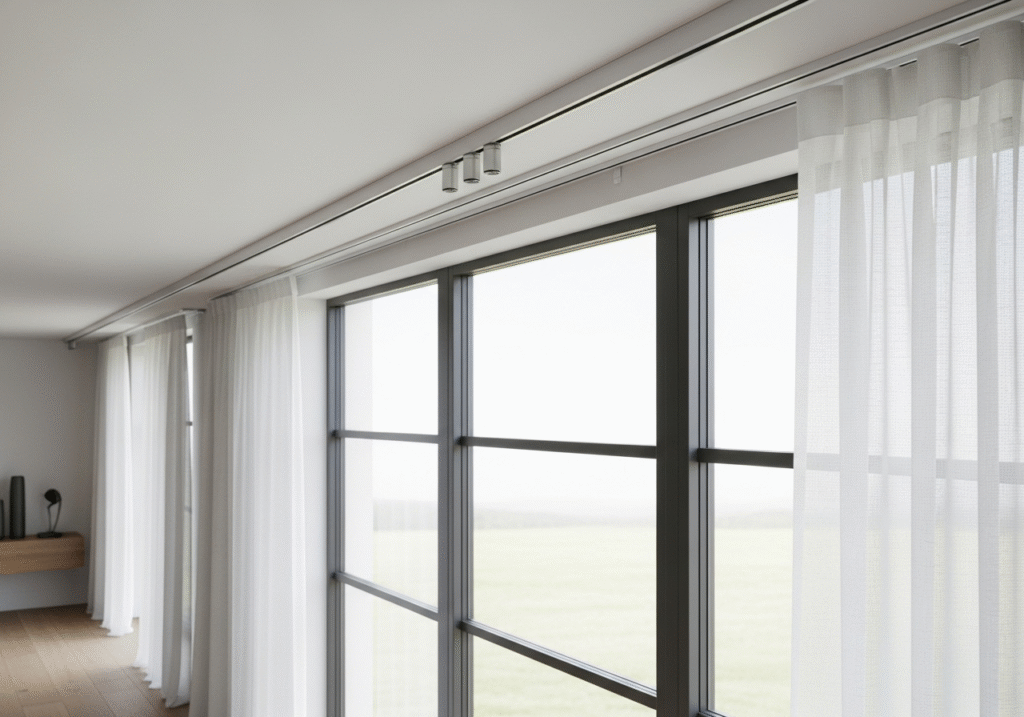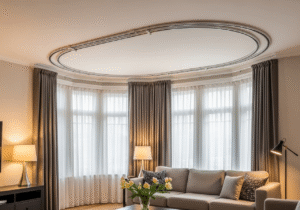Noise in open offices and hotels is a constant problem. It ruins concentration, disrupts sleep, and leads to complaints. A silent track and the right curtain can restore peace.
Silent curtain tracks reduce noise in two main ways. Their design ensures whisper-quiet operation, and they are built to support heavy, sound-absorbing curtains that dampen ambient noise and block outside disturbances, creating a more peaceful environment.
I remember when my work was just about making sure a track was strong enough to hold a curtain. Today, partners like Matt ask me about acoustic performance and decibel reduction. For his clients designing high-end hotels and modern offices, a curtain system isn't just decoration; it's an environmental control tool. They need solutions that actively improve a space by making it quieter. This shift has changed how we design and manufacture every component, from the track's inner coating to the material used in the gliders.
How do silent curtain tracks and curtains help with noise reduction?
Distracting noise from hallways, streets, and even the curtain system itself can ruin focus in an office or a guest's sleep in a hotel. This leads to lower productivity and bad reviews.
The system attacks noise on two fronts. First, the track's components are engineered to be silent, eliminating operational sounds. Second, the system supports heavy acoustic curtains that absorb echoes and block outside noise from entering.
When we design a silent track solution, we are tackling two distinct noise problems. One is the noise the system itself makes, and the other is the ambient noise in the room. You have to solve both to create a truly quiet space.
Engineering a Silent Operation
The noise from a curtain track comes from friction. It's the sound of gliders scraping along the metal channel. To eliminate this, we focus on the materials and the design of the moving parts. Our silent tracks often have a special coating on the inside to create a smoother surface. The gliders themselves are made from specialized polymers like silicone or Teflon-infused plastic that move with almost no friction. In our motorized systems, the belt is made from a rubber composite that dampens vibration, and the motor is engineered for near-silent operation. The goal is that the only sound you hear is the soft rustle of the fabric itself.
Using Curtains as an Acoustic Tool
Once the track is silent, it can support a curtain that actively manages room acoustics. A heavy, dense curtain acts like a giant acoustic panel. It works in two ways:
- Sound Absorption: It soaks up sound waves bouncing around a room, which reduces echo and reverberation. This is perfect for offices and hotel lobbies with lots of hard surfaces.
- Sound Blocking: Its sheer mass helps block sound from passing through the windows, reducing noise from traffic, construction, or nearby events.
What are the best curtain materials for noise reduction?
You can invest in a high-end silent track, but if you hang a thin, lightweight curtain on it, you will get almost no acoustic benefit. This makes the investment feel wasted.
The best materials are heavy and dense. Velvet, theatrical velour, suede, and multi-layered curtains with a blackout liner are excellent choices. Their mass and plush texture are ideal for both absorbing and blocking sound waves effectively.
The curtain fabric is just as important as the track hardware. For noise reduction, mass is the most important factor. Sound is energy, and it takes a heavy, dense barrier to stop it. As a rule, the thicker and heavier the fabric, the better it will be at dampening sound.
Top Fabric Choices
When sourcing for acoustic projects, I always recommend fabrics with a dense weave and a plush pile. The pile helps to trap and break up sound waves, while the weight blocks them.
| Fabric Type | Key Feature | Best For |
|---|---|---|
| Velvet/Velour | Heavy, plush, and dense. | Excellent all-around noise reduction. |
| Suede | Dense with a soft, matte texture. | Great absorption and a modern look. |
| Blackout Fabric1 | Typically a multi-layer synthetic. | Superior sound blocking2 thanks to its density. |
| Layered Curtains | A sheer combined with a heavy curtain. | Provides versatile light and sound control. |
The Power of Layering
One of the most effective strategies is to use layered curtains. You can install a double or even triple track system. An outer layer of heavy blackout fabric provides the main sound barrier against outside noise. An inner layer of thick velvet or velour can then be used to absorb sound within the room. This combination, supported by a silent track, offers the ultimate in acoustic control and functional flexibility. It allows a user to manage light, privacy, and noise levels independently.
What are the latest trends in silent curtain rails?
Basic silent tracks are effective, but design and technology are always moving forward. Clients now expect solutions that are not only quiet but also smarter and more aesthetically pleasing.
The latest trends integrate silent operation with minimalist design and smart home technology. This includes ultra-slim profiles that blend into ceilings, touch-motion activation, and seamless integration with building automation systems for scheduling and voice control.
The market is no longer satisfied with just "quiet." My conversations with partners like Matt are now about pushing the boundaries of what a curtain rail can be. He needs to offer his clients solutions that are on the cutting edge of both design and technology. Three major trends are defining the future of silent curtain rails.
Trend 1: Minimalist and Recessed Design
The "invisible" track is a huge trend in high-end hospitality and corporate interiors. Instead of mounting a track to the wall, we are now providing rails designed to be recessed directly into the ceiling. This creates a stunning floor-to-ceiling curtain effect where the fabric appears to float, with no visible hardware. It's a clean, sophisticated look that architects and designers love because it doesn't interrupt the lines of the room.
Trend 2: Touch-Motion and Manual Override
Smart technology is becoming more intuitive. Many of our new motorized silent rails feature "touch-motion" activation. A gentle tug on the curtain is all that's needed to trigger the motor to fully open or close the drapes. This combines the simplicity of manual operation with the power of motorization. Furthermore, a built-in manual override ensures the curtains can still be operated easily during a power outage, which is a critical feature for hotels.
Trend 3: Deeper Smart Home Integration
Simple remote controls are being replaced by full integration with smart building systems. Our silent motorized tracks can now connect via Wi-Fi or other protocols to systems like Crestron, as well as consumer platforms like Amazon Alexa and Google Home. This allows for voice command operation, scheduled routines (e.g., "close all curtains at sunset"), and control via a central building management dashboard.
Conclusion
Silent curtain tracks, paired with the right acoustic fabrics, actively reduce noise. They transform offices and hotels into quieter, more comfortable spaces, boosting productivity and guest satisfaction.
Related:
